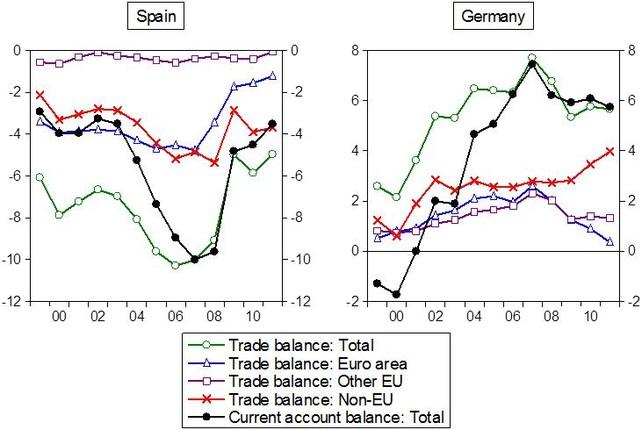Chart of the week: Intra-euro rebalancing has started
The figure shows the trade and current account balances of Spain and Germany, the largest deficit and surplus countries of the euro area (France and Italy also used to have current account deficits, but much smaller than in Spain relative to GDP). Bilateral current accounts are generally not available, but bilateral trade balances of goods are, which, in a number of countries including Spain and Germany, account for a significant portion of the current account balance.
Trade balance with different regions, and the current account balance (% GDP), 1999-2011

Source: Current account (CA): Eurostat. Trade balances (TB): author’s calculation by aggregating bilateral trade flows of goods from Eurostat’s External Trade Statistics.
In 2007, the last good year before the crisis, Spain’s trade deficit with partners outside the EU was even slightly higher than the trade deficit with euro-area partners – the same can be said about German trade surpluses. Also, Germany had a sizeable surplus with non-euro EU countries as well.
Since 2007 intra-euro trade balances have adjusted significantly: Spain’s deficit and Germany’s surplus with the rest of the euro-area have declined substantially toward zero. Yet Spain’s overall trade deficit remained sizeable, about 5 percent of GDP.
It is also interesting to observe that Germany could increase its surplus with non-EU countries, which partly compensated for the reduction of the surplus with EU countries. As a consequence, in 2011 about two-thirds of the German trade surplus came from extra-EU trade.
In a forthcoming paper I analyse the implications of these developments for further rebalancing.



